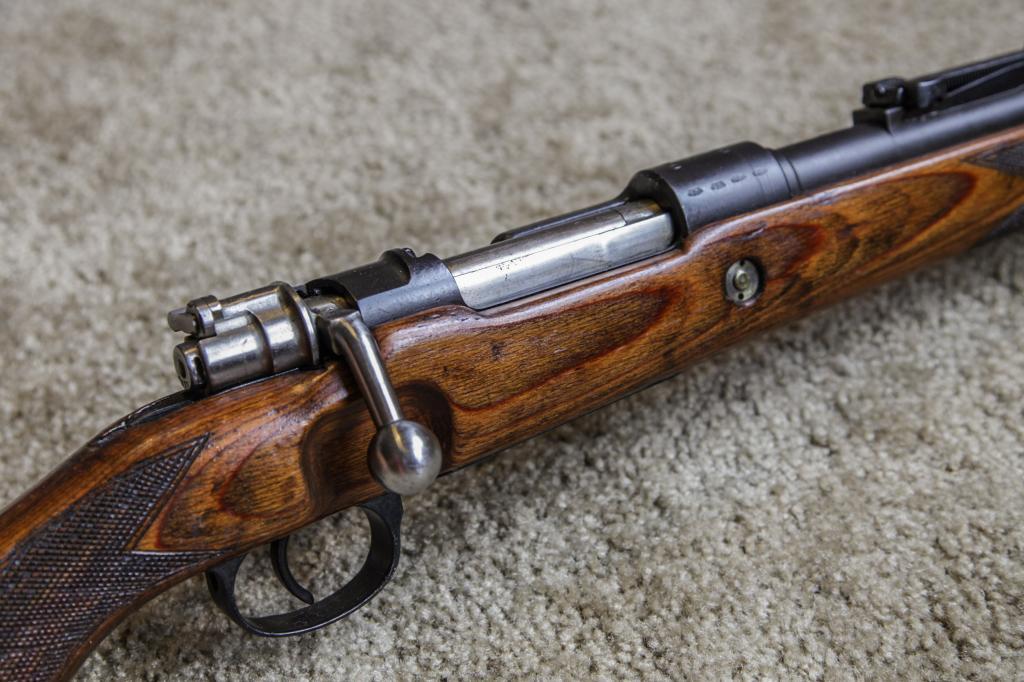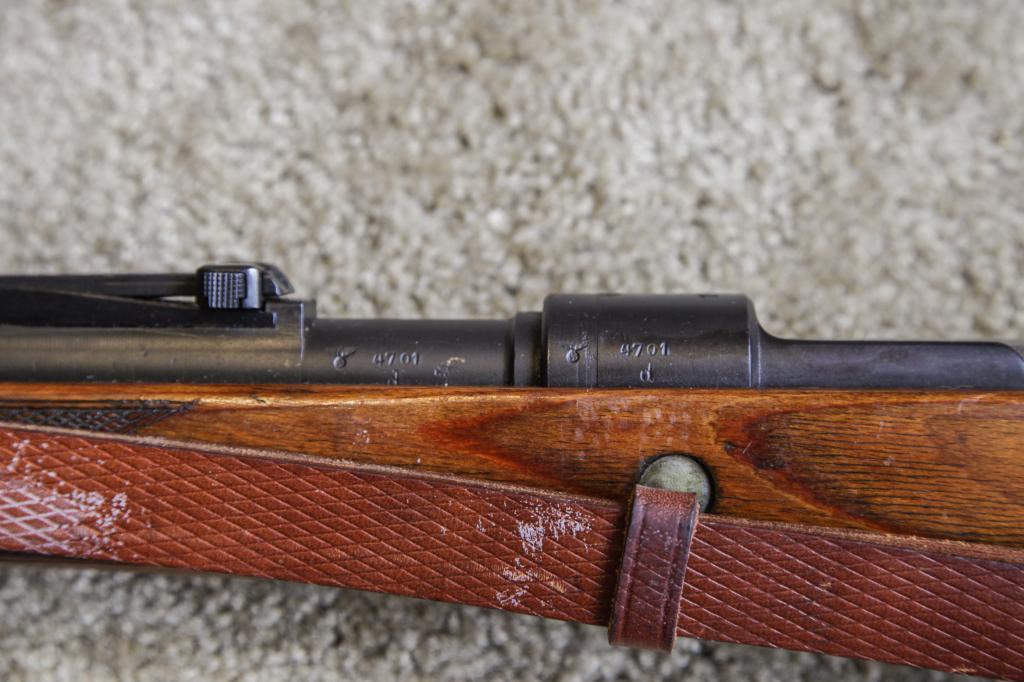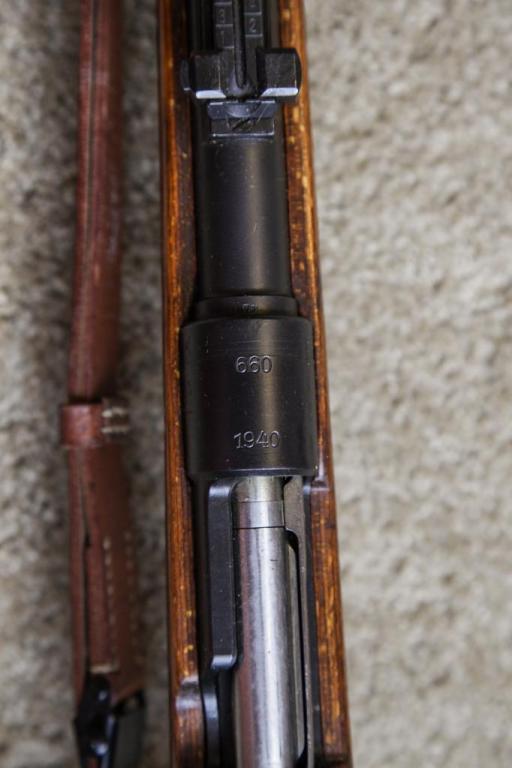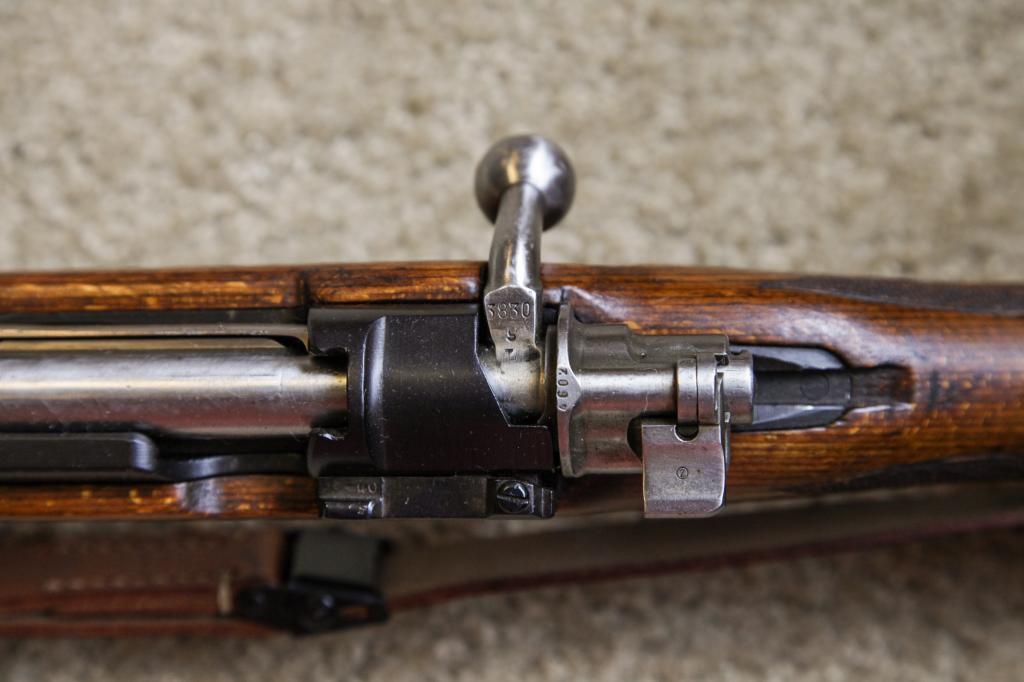Hello, I've recently inherited several rifles from my Grandfather (see the 1903A3 thread here). I am new to this collecting thing and am wondering as to the condition of this K98. I know the bolt isn't supposed to be white....is re-blueing it something a qualified gunsmith could accomplish? And, eventually I might want to replace the stock.
Also, could someone educate me on what people are talking about with the "matching serial numbers"? The barrel and receiver appear to match, though the bolt components don't?
Thanks in advance! I can post more photos if needed.Information

Warning: This is a relatively older thread
This discussion is older than 360 days. Some information contained in it may no longer be current.
- Knowledge Library

- MKL Entry of the Month
- Australia
- Austro-Hungarian Empire
- Canada
- Czechoslovakia
- Denmark
- Finland
- France/Belgium
- Germany
- Italy
- Japan
- Norway
- Russia
- South America
- Sweden
- Switzerland
- Turkey
- United Kingdom
- United States
- Yugoslavia
- Is my rifle authentic or a fake?
- Jay Currah's Lee Enfield Web Site
- On-line Service Records (Canada)
- Technical Articles/Research
- Forum
- Classifieds

- What's New?
-
Photo Gallery

- Photo Gallery Options
- Photo Gallery Home
- Search Photo Gallery List
-
Photo Gallery Search
- Video Club

- iTrader
















 Register To Reply
Register To Reply
